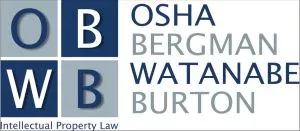A recent decision of the U.S. Court of Appeals for the Federal Circuit (CAFC) illustrates the limits of patent eligible subject matter under 35 U.S.C. § 101. Beteiro, LLC vs DraftKings, Inc.,1 reminds applicants and practitioners of the importance of ensuring that the claims, as a whole, satisfy the Alice/Mayo test of subject matter eligibility when disclosing and claiming technologies incorporating abstract ideas and to otherwise ensure that the specification and the claims include patent-eligible processes and/or apparatus.
Beteiro, LLC owns four patents which share a common specification and the title "Apparatus and Method for Facilitating Gaming Activity and/or Gambling Activity." Beteiro's patents disclose an invention that "facilitate[s] gaming activity and/or gambling activity at a gaming venue remote from the user's or individual's physical location" such that the user can "participate in live gaming activity and/or gambling activity via a user communication device" even if the user is not in the same location as the gaming venue."
A claim that all parties agreed was representative for the invention at issue recited a computer-implemented method defined in part by "receiving, with [a] computer, a bet message transmitted from [a] first communication device or from a second communication device, wherein the second communication device is associated with [an] individual, and further wherein the first communication device or the second communication device comprises a global positioning device...."
Beteiro filed at least six patent infringement cases in the U.S. District Court for the District of New Jersey, asserting that DraftKings infringed Beteiro's patents. Beteiro appealed to the CAFC after the district court decided that Beteiro's patent claims were directed to ineligible subject matter under Section 101, granted Appellee's (that is, DraftKings') motions to dismiss the suits, and denied Beteiro's requests for reconsideration.
The CAFC acknowledged that, during prosecution of some of the asserted patents, the U.S. Patent and Trademark Office examiner expressly evaluated the eligibility of the claims under 35 U.S.C. § 101, and determined that they were eligible based on the recitation of a machine or processor (i.e., the global positioning device). However, the CAFC critically reviewed the patent issues governed by 35 U.S.C. § 101 in accordance with Federal Circuit precedent and agreed with the district court's use of the now well-known and familiar Alice/Mayo test2, which found that Beteiro's patent claims are directed to abstract ideas and do not include an inventive concept.
When applying the Alice/Mayo test at step 1 ("'whether the claims at issue are directed to [a] patent-ineligible concept' such as an abstract idea"), the CAFC found that Beteiro's claims are directed to "exchanging information concerning a bet and allowing or disallowing the bet based on where the user is located." The CAFC held that Beteiro's claims include several features that are well-settled indicators of abstractness. For example, the CAFC indicated that the claims at issue broadly recite generic steps that have frequently been held to be abstract, such as detecting information, generating and transmitting a notification based on the information, receiving a message (bet request), determining (whether the bet is allowed based on location data), and processing information (allowing or disallowing the bet). The CAFC noted that such result-focused functional steps, while merely claiming a computer receiving and sending information over a network, constituted abstract concepts.
In then applying an additional lens of scrutiny to step 1 of the Alice/Mayo test, the CAFC determined that "broadly analogous" claims addressed in other cases, including "those involving methods of providing particularized information to individuals based on their locations," clearly fall within the definition of "abstract."
Additionally, the CAFC pointed out that the district court drew a parallel with "the actions of a teller at a casino that straddled state lines, who 'had to ensure patrons were on the Nevada side of the building . . . before accepting a bet.'" Thus, the CAFC similarly affirmed that the claimed method involved an ordinary, fundamental, everyday practice or "economic activity" to which Beteiro's claimed technology presumably added no appreciable level of sophistication.
Beteiro had disputed the district court's characterization of an "abstract idea" by arguing that "patent claims may be non-abstract at Alice step one if the focus of the claimed advance is on an improvement in computer technologies, rather than the mere use of computers." However, the CAFC agreed with the district court's characterization that Beteiro indeed failed to transcend "the mere use of computers as tools" and did not "claim any improvement in the computer-related technology itself."
The CAFC then reviewed the district court's analysis of step two of the Alice/Mayo test (i.e., whether "the elements of each claim both individually and as an ordered combination to determine whether the additional elements transform the nature of the claim into a patent-eligible application"). The CAFC agreed with the district court that "the representative claim failed to provide an inventive concept because it achieved the abstract steps 'using several generic computers...'."
In this connection, the district court had deemed the claimed "global positioning device" (GPS) to be a "generic computer." Beteiro contended that the inclusion of a GPS on a mobile phone did not amount to conventional technology in 2002, the earliest effective filing date of the four asserted patents. However, the CAFC was unconvinced in light of what they deemed an insubstantial discussion of such technology in the asserted patents, where "only 15 lines out of a specification that runs to no less than 98 columns are addressed to what Beteiro now insists is unconventional technology," involving "nothing more than conventional, routine, and well-understood use of GPS."
Furthermore, the CAFC determined that "a patent examiner's consideration of Section 101 issues does not "in any way shield the patent's claims from Article III review for patent eligibility." Additionally, they deemed the examiner to have "applied pre-Alice caselaw... and did not distinguish our many post-Alice cases holding that the 'physicality' of what is claimed 'is not by itself enough to exempt the claims from being directed to an abstract idea'."
In sum, the CAFC determined that Beteiro's asserted claims amounted to "nothing more than the practice of an abstract idea using conventional (even as of 2002) computer equipment, including GPS on a mobile phone."
Certainly, while Beteiro effectively filed for the asserted patents long before Alice, a large body of jurisprudence is now available to help guide the drafting and/or prosecuting practitioner. Though such guidance is varied, it can be said to coalesce in a manner that validates a clear excess of caution at the stage of drafting an application. In the process, the perceptibly wide variation in how patent examiners approach patent eligibility (despite specific guidance on the subject) and CAFC decisions relating to Section 101 continue to remind practitioners that a strongly constructed "shield" at the outset may easily represent the applicant's safest bet to reduce a likelihood of future patent invalidation.
Footnotes
1. 104 F.4th 1350 (Fed. Cir. 2024).
2. See Alice Corp. v. CLS Bank Int'l, 573 U.S. 208 (2014); Mayo Collaborative Servs. v. Prometheus Labs., Inc., 566 U.S. 66 (2012).
The content of this article is intended to provide a general guide to the subject matter. Specialist advice should be sought about your specific circumstances.



